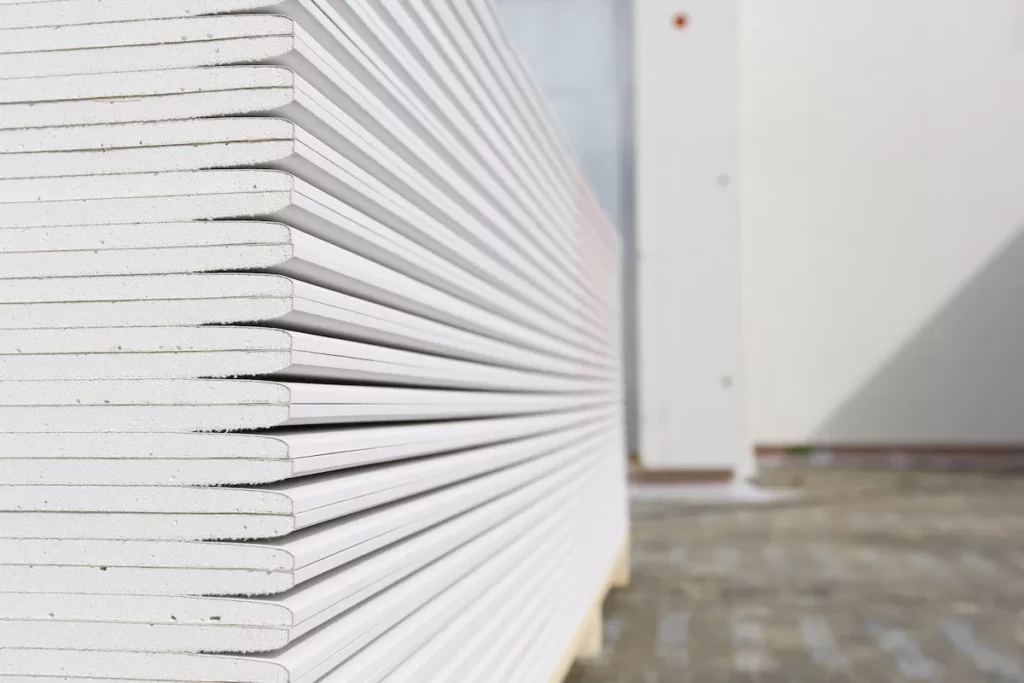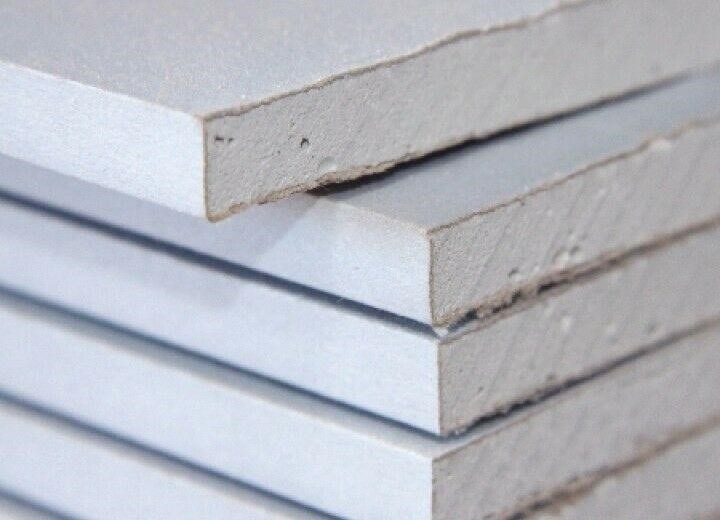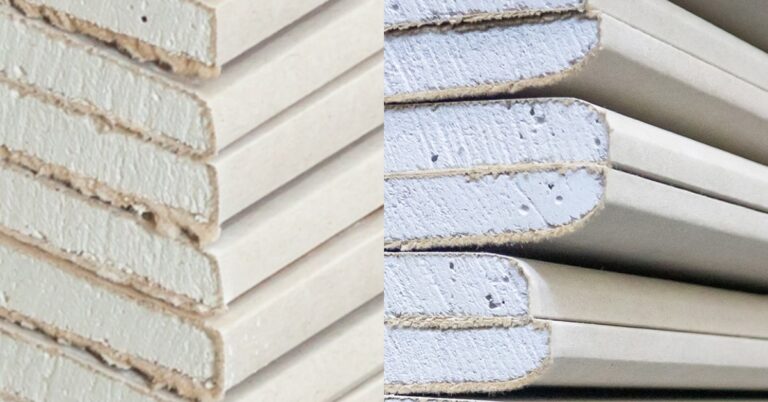In the world of construction and interior finishing, the choice of building materials plays a vital role in achieving a seamless and aesthetically pleasing result.
The plasterboard took a stand out because of its Seamless Finish, Reduced Visible Joints, Cost-Effectiveness, Time Efficiency, and Versatility.
Here, you will get to discover why tapered-edge plasterboard is a game-changer in the realm of construction and interior design.
What is tapered-edge plasterboard?
Tapered edge plasterboard, also known as drywall or gypsum board, is a type of building material used in construction and interior finishing. Also, It is a variant of standard plasterboard, featuring tapered edges along the long sides of the board, while the short edges remain square.
Why you should use tapered-edge plasterboard?

Seamless Finish: Tapered edge plasterboard improves jointing materials, resulting in a level surface with no apparent joints.
Reduced Visible Joints: increases the artistic charm and expertise of walls and ceilings by decreasing the visibility of connections between neighboring boards. Additionally help in blending the boards together, lessening the visibility of gaps and flaws.
Easier Installation: The procedure is simple and quick. Further, it helps installers achieve a neat and equal finish during the jointing and taping process by providing a guide for applying jointing compounds.
Cost-Effectiveness: When compared to square-edged plasterboard, this option is most affordable because a smooth finish can be achieved with less connecting solution and tape. Apart from that, it may lessen the need for labor-intensive finishing and sanding tasks, saving time and money.
Time Efficiency: The material might help to speed up the installation process. It allows for an effortless move from one stage of construction or refurbishment to the next, as well as faster connection and sealing.
Versatility: It is available in a range of thicknesses and widths, making it suited for a range of uses, including partitions, walls, and ceilings. It is a well-liked option for a variety of construction projects due to its flexibility.
Practical Use Cases and Examples:
Residential Construction Projects:
This is a popular choice for residential ceilings, creating smooth walls and a polished look that complements the interior design.
Commercial and Office Spaces:
It provides both privacy and a seamless appearance. Additionally, it excels in creating false ceilings, effectively concealing electrical wires, and enhancing acoustics in conference rooms and meeting areas. Its versatility and ability to achieve an easy finish make it a valuable choice for enhancing the functionality and aesthetics of interior spaces in commercial environments.
Renovation and Remodeling Projects:
Furthermore, it allows an effortless blending of new and existing walls, ensuring overall architectural continuity. The board allows for simpler changes during interior restorations, resulting in updated spaces with a fresh and modern appearance.
High-End Architectural Design:
In high-end designs, it is a preferred choice due to its clean lines and ability to achieve sleek and contemporary finishes. For luxury residences where a polished and sophisticated appearance is desired.
Commercial Establishments:
utilized in retail store interiors to create a professional and inviting atmosphere. Enhance the ambiance of restaurants and cafes, contributing to a more appealing dining experience.
What is Tapered Edge Plasterboard Used For?
constructing interior wall divisions, enhancing the insulation of interior or exterior walls, Increasing fire resistance in places at risk, and Sound pollution reduction.
Things to Remember When Fitting Tapered Edge Plasterboard

Tapered edge plasterboard is simple to set up on internal walls, cavity walls, and masonry walls. In this way, it is identical to any other plasterboard. Once it is ready for decoration it has been fitted, skimmed, and finished.
Therefore, The good news is that you don’t have to use mechanical fixings for walls; dot-and-dab with epoxy and jointing solutions is usually enough with a tapered edge cut.
For a smooth, easy-to-decorate surface, ensure that all joints are taped with excellent joint tape and skimmed with either plaster or filler. You should also cover the board’s external corners with beading to avoid any unintentional damage or crumbling of the board’s edges.
Once the plasterboard is in place, you can skim it thoroughly with plaster. Skimming will make the tapering edges look smooth and uniform.
FAQ
What Tapered Edge Plasterboard Sizes Are There?
1220mm x 900mm,
1800 x 900,
2400 x 1,200,
2500 x 1,200,
2700 x 1,200,
3000 x 1,200,
and 3600 x 1200
What is the Difference Between Tapered and Square Edge Plasterboard?
Tapered-edge and square-edge plasterboard differ in shape and cost, but thermal insulation remains consistent regardless of edge type. Both types can be cut to fit around obstacles, but waste may occur.
Which plasterboard is best for walls?
12.5mm thickness
Which plasterboard is moisture-resistant?
A high-performance plasterboard that resists moisture infiltration is the Knauf Moisture Panel. Ideal for usage in high-humidity interior construction spaces like kitchens and bathrooms.
Which Colour plasterboard is waterproof?
The water-repellent chemicals contained in the core and paper liners give MR plasterboard its water resistance. It is made of an aerated gypsum core. People frequently refer to MR plasterboard as green plasterboard because of the green treatment used to give the plasterboard these qualities.
Do I Need Tapered or Square Edge Cuts?
Tapered edges will make for a faster installation, so if you have a larger project, they may be the ideal choice. When it comes to price or mounting boards on a ceiling, a square edge is usually preferable.
Conclusion
Overall , the utilization of plasterboard presents a range of advantages like Seamless Finish, Reduced Visible Joints, and Cost-Effectiveness that contribute to streamlined and efficient construction processes.
As a result, tapered-edge plasterboard emerges as a practical and effective option, combining ease of installation with the possibility of obtaining a polished, visually acceptable result in interior design as well as building projects.

